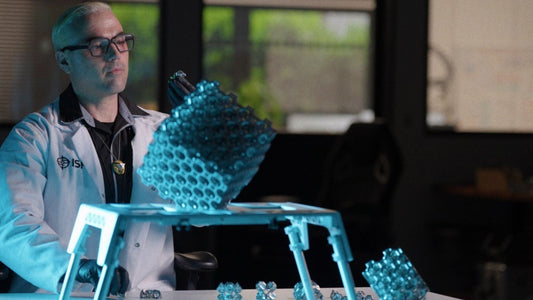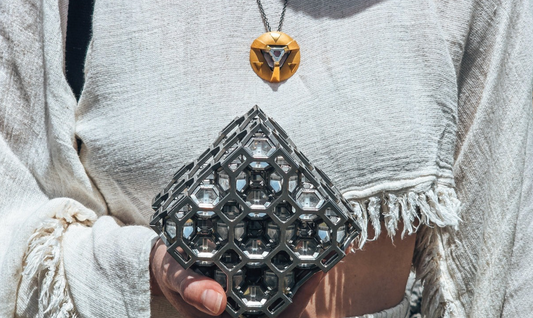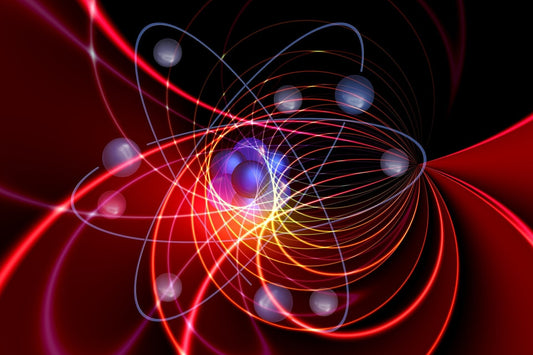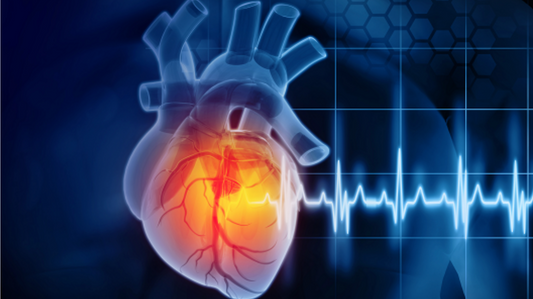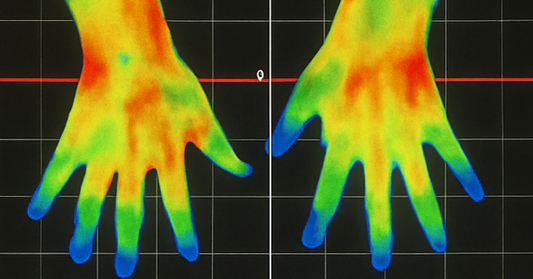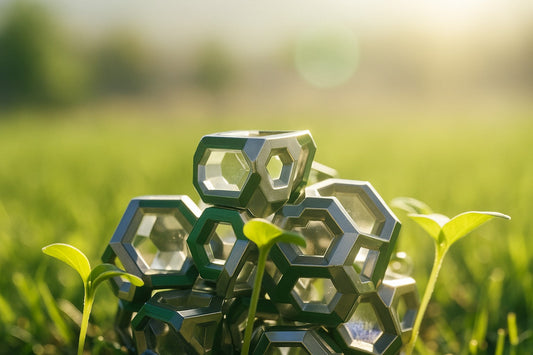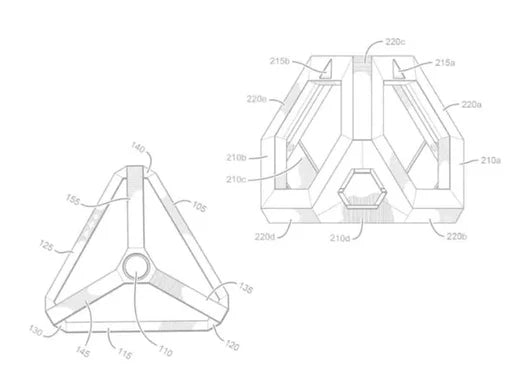
ARK Crystal - Hardware and Design
The ARK Crystal is a hydrothermally grown synthetic quartz crystal, engineered as geometrically identical regular tetrahedron-cut quartz, precisely oriented with the molecular structure of the quartz crystal along the z (or c) and x+ axes (Figure 1). The tetrahedral shape will tend to oscillate or resonate across the height of the truncated crystal and across the diameter of the tetrahedral in-sphere, resulting in intrinsic resonances, which will as well have several upper and lower harmonics. Calculations have shown that if the crystal is cut with dimensions or materials other than those specific to the ARK Crystal, then the resonant effects are absent or muted by a minimum of 25% and in some cases up to 90%.

The ARK Crystal Saddle
The saddle assembly that protects the crystal from damage is crafted from CP4 grade titanium, which highly biocompatible (non-reactive, hypoallergenic, etc.) and provides protection by floating the crystal inside a titanium structure with a system of silicon bumpers, mitigating any potential damping of the harmonic oscillations of the crystal resonators, and housing a sophisticated system of magnets that also allows the saddle to be joined to other saddles to create precise tetrahedron based geometries.
Geometric configurations of the ARK Crystal
This modular design is one example of how the ARK Crystal biotechnology is distinctly unique. While naturally occurring crystals may share some of the beneficial characteristics, only the ARK Crystal can be assembled into higher-order geometrical configurations (Figure 3), which offer non-linear amplification of efficacy. When ARK Crystals are brought together in higher-order geometries, like cuboctahedra, the oscillators resonantly couple and there is a synergistic boost such that the resulting harmonious and beneficial effects, like structuring water, are much greater for the assembly than the sum of the individual ARK oscillators individually.
Also read: "The Geometric Alignment and Synchronization of the ARK Crystal".

In addition to the highly functional modularity, ARK Crystals are also a wearable technology. The titanium saddle and rotating magnets enable the ARK Crystal to be securely fastened into a wearable ARK Crystal Pendant. With the Pendant, the ARK Crystal can be worn throughout the day, making the beneficial effects maximally accessible.

Follow ARK Crystals on social media:
Facebook: https://www.facebook.com/arkcrystals
Instagram: https://www.instagram.com/arkcrystals/
LinkedIn: https://www.linkedin.com/company/ark-crystals/?
Youtube: https://www.youtube.com/@ARKcrystals

